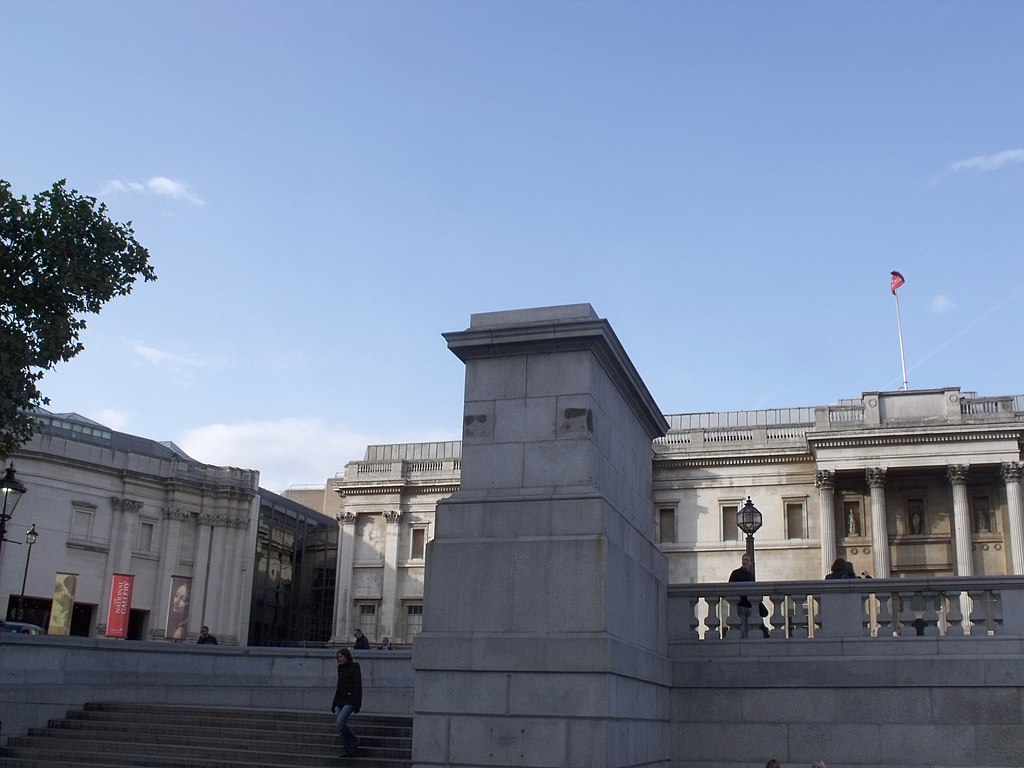In recent years political scientists have been stunned by the shortcomings of their own predictions, as surprise election-results occurred in multiple countries, favoring populism and nationalist tendencies. The forum for debate is no longer in town squares or city halls, not even on television or in the newspapers, but increasingly online through unedited, easily manipulated, social media platforms. What does the term “public sphere” even mean in our time and what role does public art have to play in civil society? Analyzing art in public space and the cultural politics behind it might better help us understand the real and perceived potency art in the public has, and if and how art can encourage criticality, reflection and dialogue. In the power structures of the public sphere, who gets to say what, and how?
Public art is found in most urban areas, often with the aim of reminding citizens of their common heritage and the prominent figures who were instrumental in shaping society, fending off their enemies and ruling their nation. But their didactic function is neither objective nor innocent, and in order to understand what they truly are, one needs to look at the systems that commission, select and produce them.
The origin of the word “monument” comes from the Greek word mnemosynon and from Latin, moneo, monere, which means “to remind”, “to advise” or “to warn”, implying a monument enables us to see the past and envision what is to come in the future. A monument tells us something about the society and rulers of the time in which it was made. It was created with a purpose and is intrinsically linked with those in power; a manifestation of the rulers’ ideology, values and beliefs. To quote the frank definition by Jorge Otero-Pailos and Widrich Mechtild, “Monuments are signs of the power to make a mark in public space and a way of making public and foregrounding a particular construction of history.” 1 Monuments remain transfixed as a gesture from the time of their creation, while society and attitudes around them develop and change. Placed in town squares, parks or other places of prominence, they are both historical and contemporary, forever revealing an increasing gap between then and now.
- Otero-Pailos Jorge; Widrich Mechtild. In: Future Anterior: Journal of Historic Preservation, History, Theory, and Criticism. 15(2): iii-vii; University of Minnesota Press, 2018, iv
We the people
Every symbol, mark or gesture made on behalf of “the people” must necessarily make significant compromises. Attempting to symbolize something to - and on behalf of - the public is an impossible task. Michel Serres address the conundrum of who “we” are in his wonderful book, Sculptures, claiming, “We do not understand the finality of cultures or social technologies because we do not know what “we” means. Who knows when we say: we know? Who decides when we decide? A single person? Everyone? A majority? An active and dynamic minority?” 2 If we are unable to properly speak of a “we,” how should we then procure art in and for the public?
- Serres, Michel, Statues – the second book of foundations, Bloomsbury, London, 2015, 6
A camel is a horse…
A well-known proverb states that “a camel is a horse designed by a committee,” implying that group decision-making drastically (and for the worse) changes the result from the initial idea. This might sometimes be true, but in the context of art in the public sphere, I would prefer a wacky camel over the many bland artworks that often gets selected by committees, ensuring that no one will get offended or provoked. Instead of commissioning public art by the strategy of “one size fits all”, I would love to see decision-makers taking the pluralism of society into account and amplifying more and different voices. Instead of catering to a perceived “we”, public art could benefit from bolder, more democratic processes for public art. As the public sphere is getting increasingly privatized and commercialized, I believe art in various forms (permanent and temporary; big and small; commissioned and illegal) might help reclaim some of the public space for its inhabitants.
Public art does not always need to be permanent, and temporary artworks have the ability to shed light on unresolved issues that require attention. Smaller, temporary artworks also generally require less funding, less bureaucracy and can thus serve as a counterweight to the larger city-led commissions, shifting the power-balance of who gets to make a mark in public space.
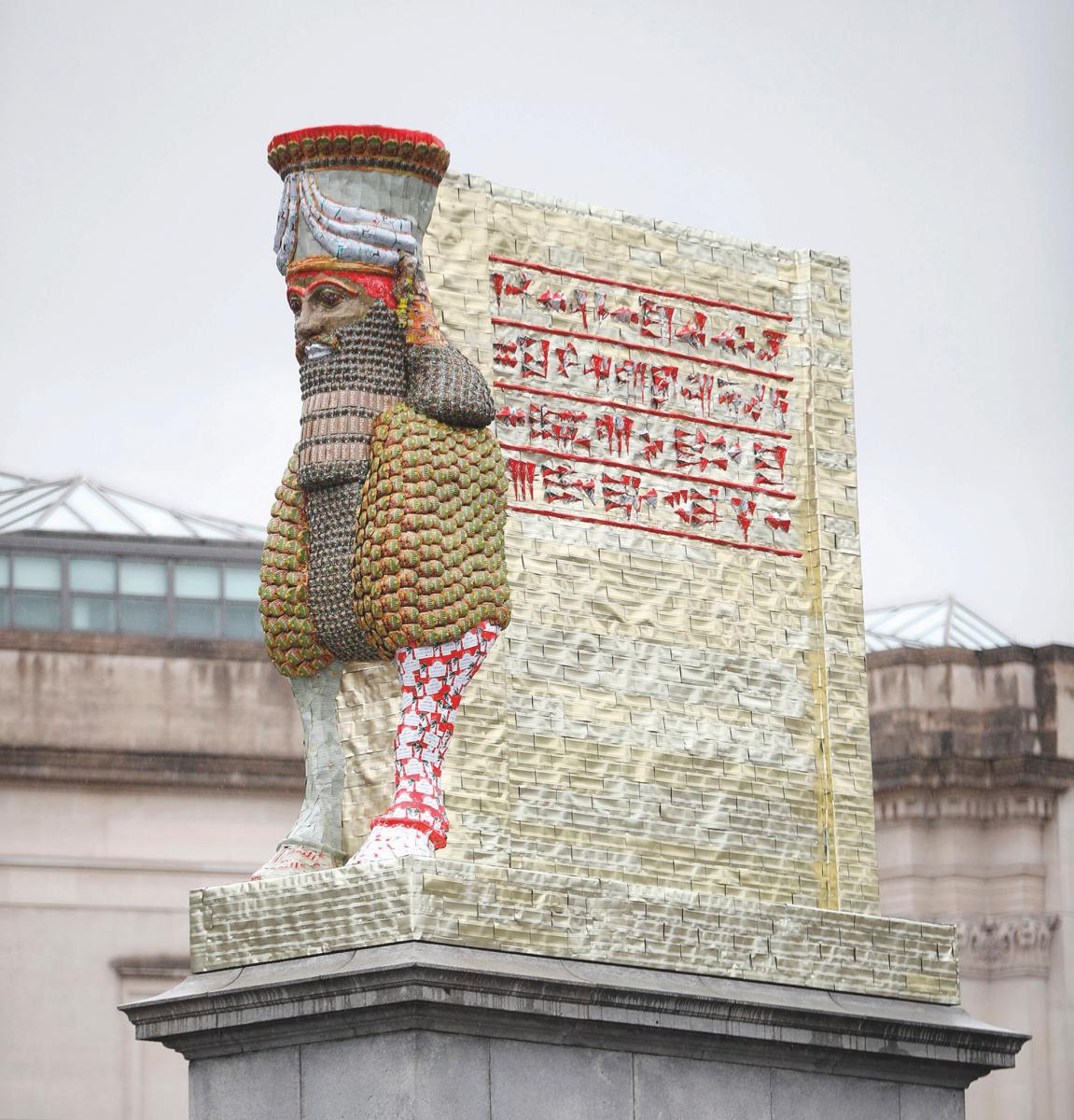
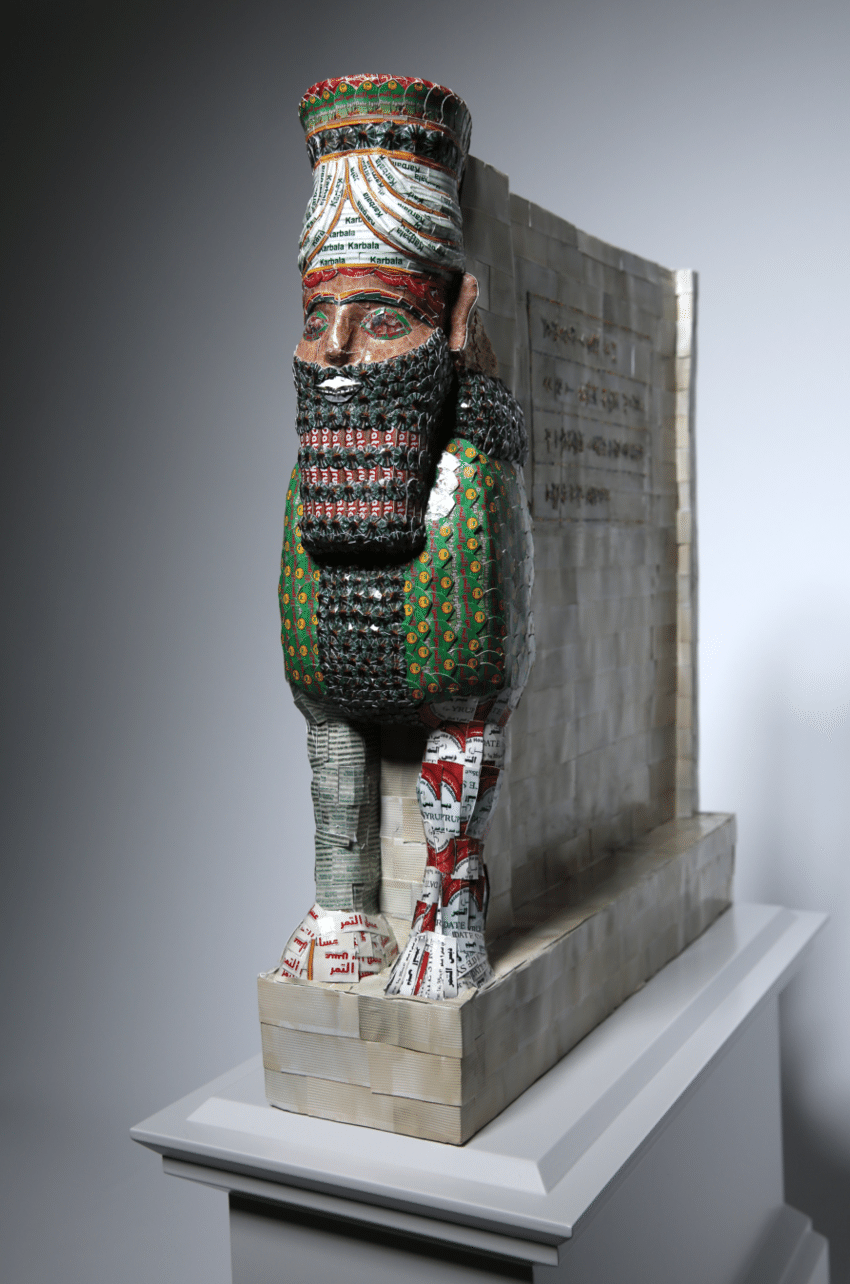
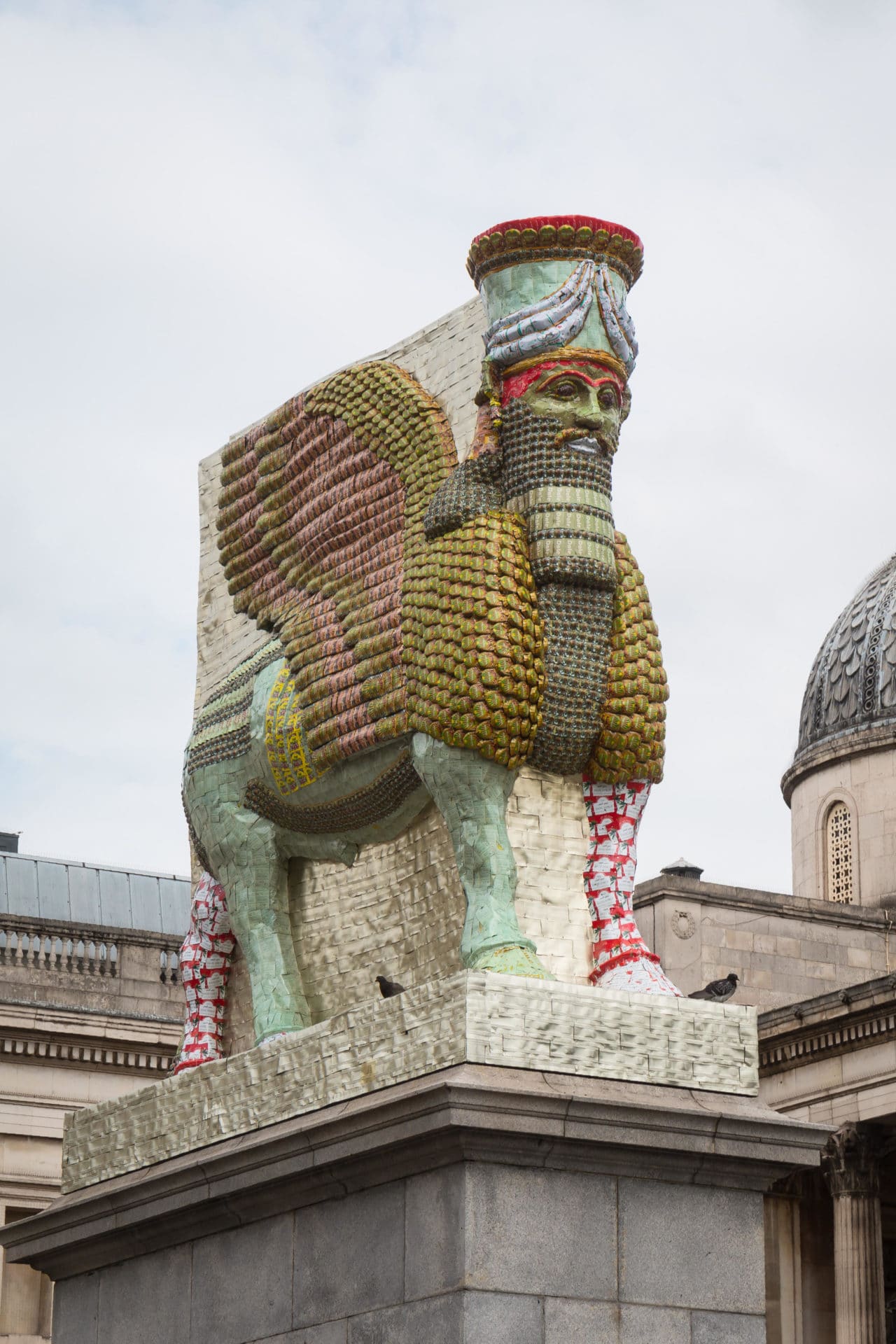
A brilliant example of a temporary artwork is the Fourth Plinth sculpture by Mikael Rakowitz from 2018, titled The Invisible Enemy Should Not Exist. The Fourth Plinth is an empty plinth at London’s Trafalgar Square, placed in the northwest corner. It was designed in 1841 to host an equestrian statue of King William IV, but due to insignificant funds it remained empty for 150 years. Since 1998 it has been used for temporary art commissions. Rakowitz’s sculpture is a copy of a lamassu, an Assyrian protective deity with a hybrid human, lion and eagle form. The original sculpture stood at the Nergal gate in Nineveh in present-day Iraq from 700 BC until it was demolished by ISIS in 2015. Rakowitz’s copy is made from colorful date syrup tins, Iraq’s second largest export after oil, and he describes his sculpture as an archaeological magic trick where the lost sculpture reappears in a different form as a ghost in London. Not only does the sculpture serve as a reminder of the human, economic and ecological disasters caused by the Iraq war and its aftermath, but it also confronts Britain with their own history, as Trafalgar square is a celebration of British Imperialism and militarism. Rakowitz’s lamassu stares down the sculpted lions at the base of Nelson’s column and defiantly points its ass to the National Gallery.
It is hard to imagine such a complex and challenging artwork would ever be constructed if it were meant to be permanent. Yet the impact of the sudden appearance of the resilient deity is profound, even if it was temporary.
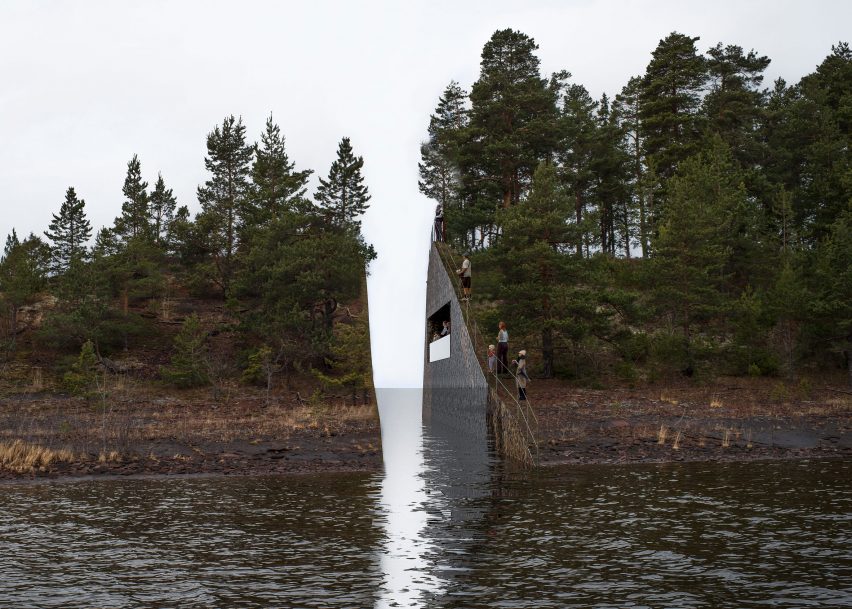
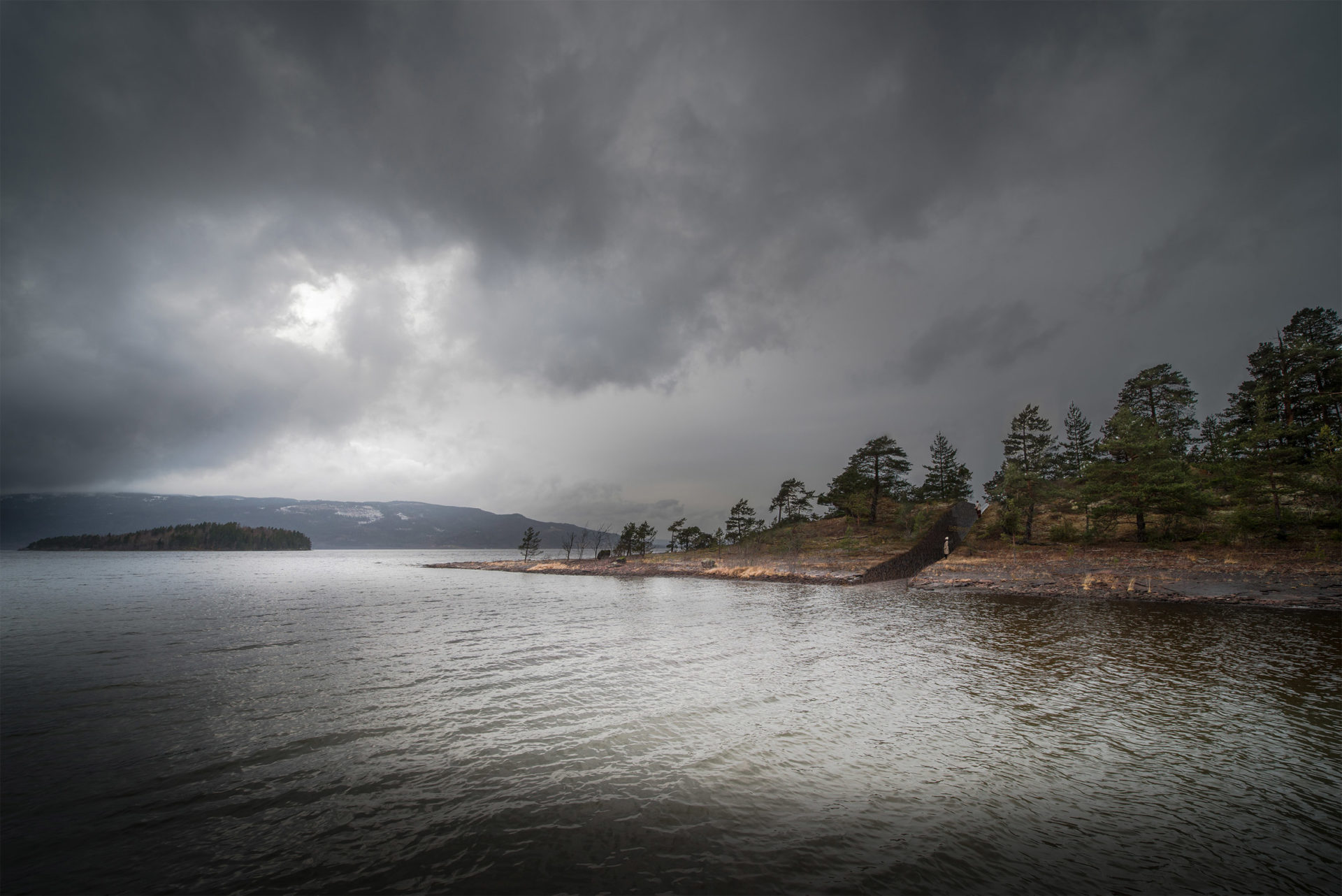
The issue with temporality and monuments is also evident in the case of Jonas Dahlberg’s winning proposal for a memorial in relation to the terrorist attack on Utøya in Norway, albeit for very different reasons. Generally, it takes a long time after devastating traumatic events before a permanent memorial is set up. But just three years after the terrorist attack 22nd of July 2011, the Norwegian government initiated a sketch competition for a memorial, and Dahlberg’s proposal, Memory Wound won by unanimous decision.
He proposed cutting a channel through the headland next to Utøya. Visitors would walk a contemplative pathway towards the cut before entering an underground tunnel that would lead into the gaping wound in the landscape. On the smooth, vertical stone wall on the opposite side of the channel, the names of those who died would be inscribed. Conscious of the impossibility of making sense of such meaningless violence, Dahlberg proposal was more of an anti-monument in the sense that his artwork was not so much about what is there, but rather, what has been removed. The sorrow and trauma are represented through absence, turning the memorial into an experience rather than a spectacle. Even though the process was thorough and in dialogue with the victim’s families, a few neighbors protested. They did not want to see the “wound” from their houses and started lobbying for its cancellation. Even though the protestors were few, it quickly became a political issue, and the recentness of the trauma made it difficult to have a constructive dialogue on the matter. Eventually the politicians overruled the mandate given to KORO (Public Art Norway) and terminated the project in 2017. It is a great loss that the proposed artwork was cancelled, and I wonder whether the outcome would have been different if the the Norwegian government waited five or ten years longer before starting the public art commission in the first place. This incident reveals something about the timing for difficult conversations, and in my view simply shows that Norwegian politicians were unprepared to have the conversation they invoked by commissioning the artwork.
A greater variety of artistic expression in the public might encourage criticality, but what can we do when the monuments of our past become antagonizing?
When ghosts come back to haunt us
For most parts we pass public monuments daily with little or no thought whatsoever, and we might not even remember who all of these sculptures looming over us are anymore. But some monuments evoke past and current traumas and, when confronted with sins they have yet to atone for, these monuments become scars on the cityscape and our national self-image.
We should not protect public monuments and artworks at all costs thinking they are history, because their history was always flawed and biased. Instead, we should listen to what they tell us, and actively engage in the debate they spark. Avery F. Gordon describes this phenomenon as haunting, which he describes as “an animated state in which a repressed or unresolved social violence is making itself known […] when home becomes unfamiliar, when your bearings on the world lose direction, when the over-and-done-with comes alive, when what’s been in your blind field comes into view. Haunting raises specters, and it alters the experience of being in linear time, alters the way we normally separate and sequence the past, the present and the future. These specters or ghosts appear when the trouble they represent and symptomize is no longer being contained or repressed or blocked from view[…] Haunting always registers the harm inflicted or the loss sustained by a social violence done in the past or being done in the present and is for this reason quite frightening. But haunting, unlike trauma by contrast, is distinctive for producing a something-to-be-done.” 3 Ignoring these ghosts will only makes it worse, but by heeding their warnings, we might resolve the troubles of the past and silence the ghosts. Public artworks can be relocated and archived. Removed from their plinths we no longer look up to them, and they can be demoted to historical relics or archived. But while the dialog concerning antagonizing monuments is important, we must not be so blinded by symbolic gestures that we fail to address that the haunting does not begin or end with antagonizing sculptures but with society itself.
- Gordon, Avery F, Ghostly Matters: Haunting and the Sociological Imagination, University of Minnesota Press, USA, 1997, 2
The immaterial monument.
Public art is able to infiltrate the public sphere and can make visible the power structures at play and confront us with our past. No monument will ever resonate positively with everyone, but a cacophony of different voices could strengthen civil society and encourage criticality and dialogue. For a while now I have been trying to imagine an immaterial monument that does not celebrate conquest, heroism or the nation state, but alludes to unifying concepts that acknowledge diversity, globalism, human rights and democracy. The immaterial monument might be an oxymoron, but while it may never be found, its effects can possibly be traced.
Espen Johansen is an art historian, curator and writer based in Bergen. He has an MA in Art History from the University of Bergen and a degree in Creative Curatorial Practice from the Bergen School of Art and Design. In 2019, he participated in the one-year course, ‘Negotiating Artistic Value: Art and Architecture in the Public Sphere’ at the Royal College of Art in Stockholm. His curatorial practice is based on the potential of art as an alternative means of communication in our mediated society, especially with a focus on art in the public space and the power structures in the public sphere. Learn more at espenjohansen.art


